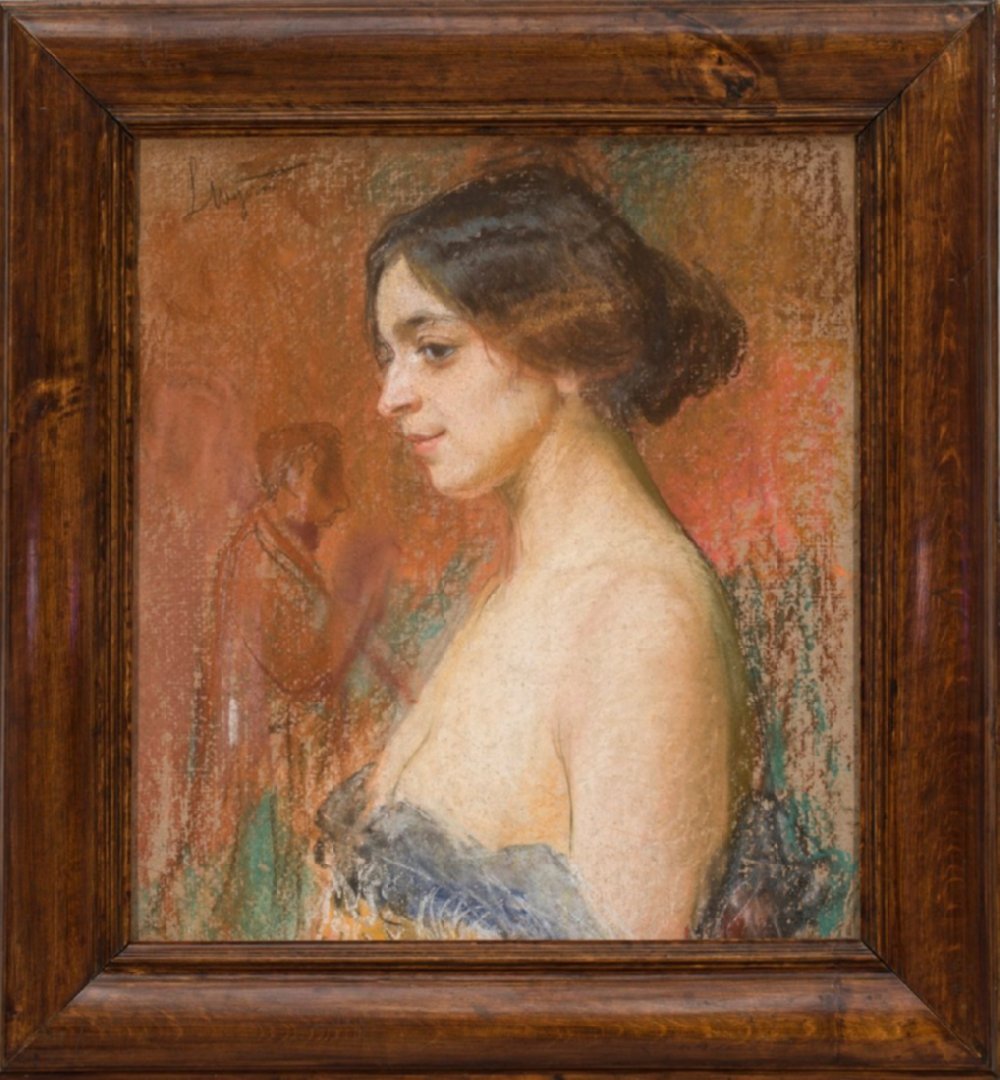Description:
Leon Wyczółkowski (1852-1936) often visited Ukraine since the 1880s. He was in Berezne at Kazimierz Podhorski’s, his brother Michał’s and his sons Władysław and Stefan’s*. Years later he recalled, „I left at night and by morning I could not get enough. I could not be indifferent to the beauty of nature. The most beautiful country. […] Groves of beehives […] with dozens of hives […] the river flowing, springtime delight, masses of reeds with wicker, fishermen busy, trees in bloom, southern sky, garnet, ultramarine, and on this background flowers. Colorful people, top hats, ribbons, wonderful pictures like from a fairy tale. No wonder that later I could not agree to anything else.”**.
Description of the painting:
With age, Leon Wyczółkowski’s innate allergy to the smell of oil paints was becoming increasingly apparent*. Pastels as one of the few seemed to keep up with the pace of the painter’s work and his health requirements. Around the age of 50, pastels completely dominated Wyczół’s work. He painted landscapes and still lifes with them, touched up lithographic prints, often making it difficult to identify the original technique, but above all he created portraits*.
The process of creating images of friends and well-known personalities from the world of politics or art, although in essence quickly painted, was preceded by many hours of studying the characters. Thanks to meticulous observation, the technique used and the painter’s personal relationship with the models, unique works came to life, pulsing with life and accurately characterizing the personalities captured in them. As a result, the portraits made by Leon Wyczółkowski not only present a faithful reflection of the features of the characters, but also their dominant character traits and interests.
The portrait of Sulima portrays the well-known and highly esteemed actress of the time – Helena Stanisława Gottowt, who assumed the artistic pseudonym “Helena Sulima**”. In 1896 she debuted on the stage of the Lviv theater in the play “Sailor” under her real name. In 1898-99 she appears in the Poznań theater under the pseudonym “Sulima”. In 1900 she decides to show herself to a wider audience in Krakow in the play “Dutiful Child”. She remains in the city until 1906***. Here, Wyczół must have had the opportunity to admire her acting skills more than once, and it is in Krakow that he portrays her in 1901.
The painter presents the actress in a profile, half-length view. Her face is adorned with large dark brown eyes and a faintly outlined smile. Her dark hair carefully done up in a bun reveals clearly outlined lines of her naked neck, shoulders and back. Half-covered by delicate, blue, transparent fabric and visible contours of a feather boa on her chest, they increase the feeling of an intimate character of the created image.
Sulima is shown against a background of warm ochres, reds and greens, not specified in more detail. On the right side of the portrayed, Wyczółkowski placed a small standing male figure.
In the same year that the portrait was created – 16 March 1901 – the premiere of Stanisław Wyspiański’s “Wedding” took place. Helena Sulima embodied the character of Rachel in it. In the review published in “Czas”, Rudolf Starzewski highly praised her acting: “A separate mention should be given to the role of Rachel, perhaps the best of the so far of Ms Sulima, a role set with tact and accuracy, and carried out without fault and flaw”****. In 1905, still absorbed by the staged drama, Wyczółkowski immortalizes the eminent Krakow historian of literature, theater and criticism in the work entitled “Karol Estreicher in the Theater Box at the Premiere of Wyspiański”*****.


